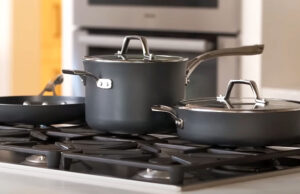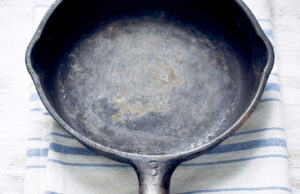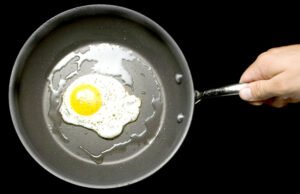As an Amazon Associate, I earn from qualifying purchases at no extra cost to you.
Whirlpool Dishwasher Sani Rinse vs High Temp Wash: Which is Better?
Have you ever finished a dishwasher cycle only to find your dishes still feeling greasy or not fully clean? I faced the same problem with my Whirlpool dishwasher until I explored two powerful settings — Sani Rinse and High Temp Wash. The answer to cleaner, safer dishes lies in knowing how and when to use these settings. In this article, you’ll discover the real difference between Whirlpool Dishwasher Sani Rinse and High Temp Wash and how to use them the right way for better results every time.
Understanding What Sani Rinse Does
The Sani Rinse option on a Whirlpool dishwasher is made to kill germs and bacteria using very hot water. This setting helps to make your dishes not just clean, but also safe.
It works by raising the rinse water temperature to around 155°F (68°C), which is high enough to sanitize your dishes. This is very helpful when you’re washing baby bottles, cutting boards, or anything that touches raw meat.
I first noticed the value of Sani Rinse after a family dinner where we used lots of serving spoons and dishes. Even though they looked clean, I worried about germs.
After running the Sani Rinse cycle, everything felt fresher, and I felt more comfortable using the dishes again. This setting is approved by the National Sanitation Foundation (NSF), which means it meets safety standards.
Sani Rinse adds more time to the cycle, but the peace of mind it gives is worth it. If someone in your house has allergies or a weaker immune system, this setting is a must. It helps make sure your dishes are not just free of food, but also free of bacteria that might make someone sick.
It’s also great for families with babies or small kids. When I used to wash baby bottles, I always ran them through the Sani Rinse setting. It gave me comfort knowing they were safe and clean. This feature does not use more water, but it uses more energy because of the higher heat.
Even though it takes a little longer, you might find it’s worth the wait when you care about hygiene. For people who cook meat often or prep food for many people, Sani Rinse is like an extra level of care.
Some dishwashers might not dry as well after Sani Rinse, so it’s good to turn on the heated dry option. This helps remove the leftover steam from the hot rinse and makes your dishes feel fully done when the cycle ends.
- Heats rinse water to kill bacteria
- Best for baby items, cutting boards, and meat-prep tools
- Adds time but not extra water
- Offers peace of mind for families with health concerns
- Works well with heated dry for better drying
- NSF certified for sanitation
What High Temp Wash Means
High Temp Wash is another helpful setting in your Whirlpool dishwasher. This option raises the temperature of the main wash water, not the rinse water like Sani Rinse does. It makes sure the wash cycle starts hot enough to remove thick grease and dried-on food. The heat helps to melt away food particles and loosen stuck-on messes.
When I first used High Temp Wash, I noticed a big change. My pans with dried spaghetti sauce came out much cleaner. I didn’t have to scrub them before putting them in the dishwasher, which saved me time and effort. This feature is perfect for when you’re washing heavily soiled dishes, like pots and pans, baking dishes, and greasy plates.
High Temp Wash is a smart option to use if you don’t pre-rinse your dishes. If you’re like me and often forget or don’t want to pre-rinse, this setting helps a lot. The heat helps activate the detergent better, which makes the soap work harder on food and grime.
This setting also pairs well with the Normal or Heavy cycle. You just press the button before starting the cycle. It may make the cycle last longer, but the better cleaning is worth it, especially after big meals or dinner parties.
One thing to remember is that this feature is about cleaning strength, not sanitizing. While it uses hot water, it’s not always hot enough to kill germs. So if you want deep cleaning and disinfection, you might still want to use it together with Sani Rinse.
High Temp Wash does use more energy, so it may raise your energy bill a little. But if your dishes often come out dirty, the small cost is worth the clean results. Over time, it can also help your dishwasher stay cleaner inside, because it breaks down greasy buildup.
- Heats wash water for stronger cleaning
- Best for dirty pans, pots, and greasy dishes
- Helps if you skip pre-rinsing
- Works best with Normal or Heavy cycles
- Boosts detergent performance
- May not sanitize like Sani Rinse
- Slightly longer and higher energy use
When Should You Use Sani Rinse?
Choosing the right setting depends on what you’re washing and who will use the dishes. I always use Sani Rinse after cooking chicken or pork. These meats can carry germs that are dangerous if not washed away fully. When I clean knives and cutting boards used for meat, I want to be sure all bacteria are gone. That’s when Sani Rinse becomes very useful.
You should use Sani Rinse when washing baby items, lunch boxes, or water bottles. Kids often touch their dishes with their mouths or hands, so it’s smart to make sure everything is extra clean. I’ve also used Sani Rinse during flu season to help prevent spreading sickness through shared cups and plates.
It’s also a great idea to use it if anyone in your house has been sick recently. After someone recovers, I run a load with their plates, cups, and utensils using Sani Rinse just to be safe.
Sani Rinse is not needed every day. If you’re just washing cereal bowls or coffee mugs, you may not need it. But for times when safety and health are more important, this option really helps.
Another good time to use Sani Rinse is during the holidays or family events. When guests come over, I like to be sure the dishes are fully clean. It gives me confidence that I’m serving food safely, even if no one can see the difference.
Some people use this setting every day, especially in homes with babies, older adults, or people with health conditions. But for most families, using it once or twice a week is enough.
- Use after handling raw meat
- Great for baby and kids’ items
- Helpful during cold and flu season
- Best after someone in the home is sick
- Good for parties or family events
- Not needed for simple everyday dishes
When Should You Use High Temp Wash?
There are times when your dishwasher just needs more cleaning power. That’s when you should use High Temp Wash. I use it mostly after cooking oily foods like fried chicken or dishes with cheese. These foods often leave a greasy film that cold water won’t remove. The high heat melts grease and helps the soap clean better.
If you often bake, roast, or grill, your baking trays and roasting pans can get pretty messy. High Temp Wash is the perfect option for these. I use it whenever I see dried sauces or sticky food stuck to plates. It saves me from having to soak them in the sink first.
It’s also good if your dishes often come out cloudy or still dirty. This might mean your water is not hot enough during the wash. High Temp Wash fixes that by raising the temperature inside the dishwasher.
This setting also helps when you use eco-friendly detergent. These detergents are safe but may not work as strongly. With High Temp Wash, they get the extra boost they need to clean well.
Using this setting is a smart habit if your dishwasher is older or not very strong. I used to have an older model, and High Temp Wash helped it work better. Now I have a Whirlpool model, and the difference is still clear when I use the feature.
One more tip — High Temp Wash can be helpful if you live in a cold climate. Cold tap water can lower your dishwasher’s inside temperature. High Temp Wash fixes that by heating the water enough for strong cleaning.
- Best for greasy or sticky dishes
- Good for baking trays and pans
- Helps when detergent feels weak
- Great for older dishwashers
- Fixes cloudy dish issues
- Useful in cold water areas
Can You Use Both Sani Rinse and High Temp Wash Together?
Yes, you can use both together, and in many cases, you should. This combo gives you both deep cleaning and strong sanitizing. I use both settings after cooking large meals, especially if I have guests over or cooked with a lot of oil or meat.
The High Temp Wash takes care of the stuck food and grease, while Sani Rinse makes sure everything is safe and germ-free. This double action is helpful when you’re washing a big load of dishes that have come into contact with raw meat, dairy, or sticky sauces.
Running both settings will make the cycle longer and use more energy. But it gives the cleanest and safest results. I don’t use this combo every day, but when I need full power, it works wonders.
One thing to keep in mind — using both settings might make the dishwasher take over two hours. But the results speak for themselves. Everything comes out sparkling, dry, and safe to use again right away.
I use both settings when my kids have friends over and we use many dishes. I also use them after hosting dinner parties or holiday meals. These are times when the extra time and energy are worth the outcome.
If you’re not in a hurry and want the cleanest possible results, go ahead and press both buttons. You won’t regret it.
- Yes, both can be used at the same time
- Great for post-party cleaning
- Best after greasy or meaty meals
- Adds time but boosts results
- Ideal for families or health safety
- Worth it when deep clean is needed
Which Setting Saves More Energy?
If you’re trying to save energy, you need to be smart about when and how you use these settings. Between the two, High Temp Wash usually uses more energy than Sani Rinse. That’s because it heats a full load of water during the main wash cycle. Sani Rinse only heats the rinse water at the end of the cycle.
But the real answer depends on how dirty your dishes are. If you don’t need both settings, it’s best to use just one. For light meals or breakfast dishes, you may not need High Temp Wash at all. For safer dishes after chicken or illness, use Sani Rinse.
You can also save energy by running the dishwasher only when it’s full. I wait until my dishwasher is full before using any cycle. This way, I save water and power. Turning off Heated Dry can also help save power if you don’t mind letting dishes air dry.
If you have an energy-efficient model, using both Sani Rinse and High Temp Wash sometimes won’t add too much to your bill. Newer Whirlpool models are built to save more energy than old ones.
The key is to use the right setting for the right load. If you do that, you’ll get clean dishes without wasting energy.
- Sani Rinse uses less energy than High Temp Wash
- Use only what’s needed based on your dishes
- Always run full loads to save energy
- Turn off Heated Dry to save more
- Use both settings wisely for best results
- Modern dishwashers are more energy friendly
Final Thoughts
Using a Whirlpool dishwasher the right way makes life easier. Knowing when to choose Sani Rinse or High Temp Wash can improve your dishwashing results a lot. You’ll get cleaner, safer dishes without doing extra scrubbing. Use these features based on your needs. Try not to overuse them, but don’t skip them when your dishes need extra care. Your kitchen and your family will thank you.
| Setting | Purpose | Best For | Energy Use |
|---|---|---|---|
| Sani Rinse | Sanitize rinse water | Baby items, meat tools, sick days | Lower |
| High Temp Wash | Heat wash water | Greasy dishes, pots, no pre-rinse | Higher |
| Both Together | Clean + sanitize | Large meals, parties, safety | Highest |
Frequently Asked Questions (FAQs)
Is it safe to use both settings every day?
Yes, it is safe, but it may not be needed every day. If your dishes are not too dirty and you don’t need sanitizing, you can skip using both settings. Using them daily may use more energy, and over time, this can increase your power bill. It is better to save them for when your dishes really need extra cleaning or sanitizing.
Is it better to pre-rinse before using these settings?
You do not have to pre-rinse if you use High Temp Wash. This setting is made to break down food without pre-rinsing. In fact, many modern dishwashers work better without pre-rinsing. Just scrape off big food bits, and let the dishwasher handle the rest. Pre-rinsing too much might even make the detergent less effective.
Can I use Sani Rinse for plastic items?
Yes, you can, but you should make sure the plastic is dishwasher-safe. Very high heat can sometimes warp or melt thin plastic. Place plastic items on the top rack, where the heat is less strong. Always check the bottom of the item to see if it says “dishwasher safe” before using Sani Rinse.
Can High Temp Wash damage dishes?
It usually won’t damage dishes if they are dishwasher-safe. But for delicate glassware or items with gold trim, the high heat could cause fading or damage over time. If you are unsure about a dish, hand wash it instead. High Temp Wash is best for tough items like pots, pans, and plates.
Do I need to use detergent with these settings?
Yes, always use detergent with both Sani Rinse and High Temp Wash. These settings work better when the detergent is present. The heat helps the detergent work stronger. Make sure to use a good quality dishwasher detergent for the best results. Powder, pods, or gel can all work well.
Is it okay to open the dishwasher mid-cycle?
It is safe, but not a good idea during Sani Rinse or High Temp Wash. Opening the door can let out the heat, which reduces the power of these settings. If you must open the door, wait until after the main washing or rinsing is done. Also, be careful of hot steam when opening.
Can I dry dishes faster after using Sani Rinse?
Yes, you can dry dishes faster by turning on the Heated Dry option. This works well with Sani Rinse, because the dishes come out very hot and wet from the high heat rinse. Heated Dry helps remove that steam quickly. Or, you can crack open the door after the cycle to let steam out faster.
Do I have to use both settings for a clean load?
No, you do not have to use both. If your dishes are just lightly used, you can use Normal or Light Wash. Save High Temp Wash for greasy meals and Sani Rinse for health concerns. Use them only when needed to save time, energy, and wear on your dishwasher.




